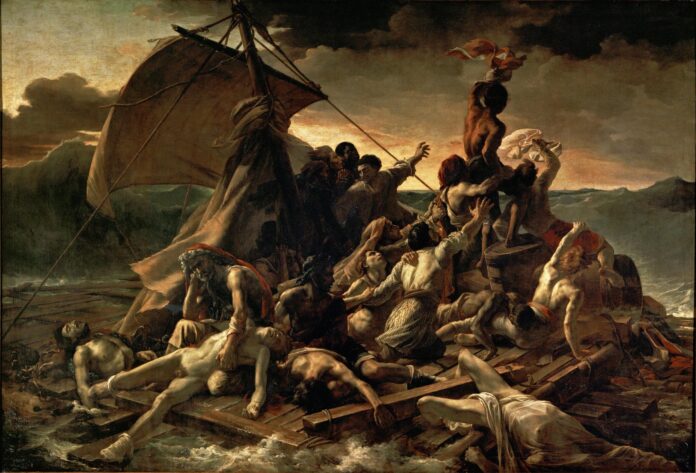The Raft of the Medusa by Théodore Géricault is an iconic painting that has captivated audiences for over two centuries. This dramatic masterpiece depicts the aftermath of a tragic event that occurred in 1816, when a French frigate, the Méduse, ran aground off the coast of West Africa. In this article, we will explore the background, analysis, and reception of this renowned work of art.
The Historical and Artistic Context of The Raft of the Medusa
To fully appreciate the significance of The Raft of the Medusa, it is important to understand the historical and artistic context in which it was created. Théodore Géricault was a French artist who lived in the early 19th century, a time of great change and upheaval in Europe. The Romanticism movement was on the rise, and artists were seeking to express their emotions and experiences more objectively and personally.
Géricault was drawn to the story of the Méduse shipwreck, which had caused a scandal in France due to the mishandling of the survivors by the ship’s captain. The painting depicts the moment when the survivors were finally rescued, after being stranded on a raft for 13 days. Géricault spent months researching the event and interviewing survivors to create a realistic and dramatic representation of the scene.
Analysis of The Raft of the Medusa
The Raft of the Medusa is a large-scale painting that measures 16 feet by 23 feet, and it is known for its vivid and intense portrayal of human suffering. The painting is divided into two distinct sections: the chaotic and desperate scene on the raft, and the more hopeful scene in the distance, where a ship can be seen on the horizon.
The composition of the painting is carefully orchestrated to create a sense of movement and drama. The figures on the raft are arranged in a pyramidal shape, with the strongest and most determined survivors at the top, and the weakest and most desperate at the bottom. Light and shadow are also masterful, with the contrast between the dark and stormy sky and the bright, hopeful horizon creating a sense of tension and anticipation.
The symbolism of the painting is rich and complex. The raft can be seen as a metaphor for human society, with the survivors representing the various classes and social groups. The figures on the raft are depicted in various stages of despair, hopelessness, and determination, highlighting the resilience and strength of the human spirit in the face of adversity.
Reception and Impact of The Raft of the Medusa
The Raft of the Medusa caused a sensation when it was first exhibited in Paris in 1819. The painting was hailed as a masterpiece of Romanticism and a powerful commentary on the failings of the French government and society. It was also controversial, due to its graphic depiction of human suffering and the social and political critique it contained.
The painting has had a lasting impact on art and culture, inspiring numerous artists and writers throughout the years. It is considered one of the most important works of art in the Romanticism movement and a powerful symbol of human resilience and survival in the face of tragedy.
Conclusion
In conclusion, The Raft of the Medusa by Théodore Géricault is a remarkable work of art that continues to captivate audiences with its emotional intensity, vivid symbolism, and technical mastery. Through its depiction of human suffering and resilience, the painting offers a powerful commentary on the human condition, and a timeless reminder of the importance of empathy, solidarity, and hope in times of crisis. As a symbol of the Romanticism movement and a testament to the enduring power of art to move and inspire us, The Raft of the Medusa remains an iconic masterpiece of the art world and a source of inspiration and reflection for generations to come.
As we continue to study and appreciate The Raft of the Medusa, we can gain a deeper understanding of its significance and impact on art and culture. This powerful painting serves as a reminder of the resilience and determination of the human spirit, and a testament to the enduring power of art to inspire, challenge, and move us.
And as always folks be sure to check out the Global Growth Forum and read some of the latest articles covering similar topics that are both interesting and informative. Also, if you would like to read some of the latest articles in Hindi be sure to check out the Mojo Patrakar.









